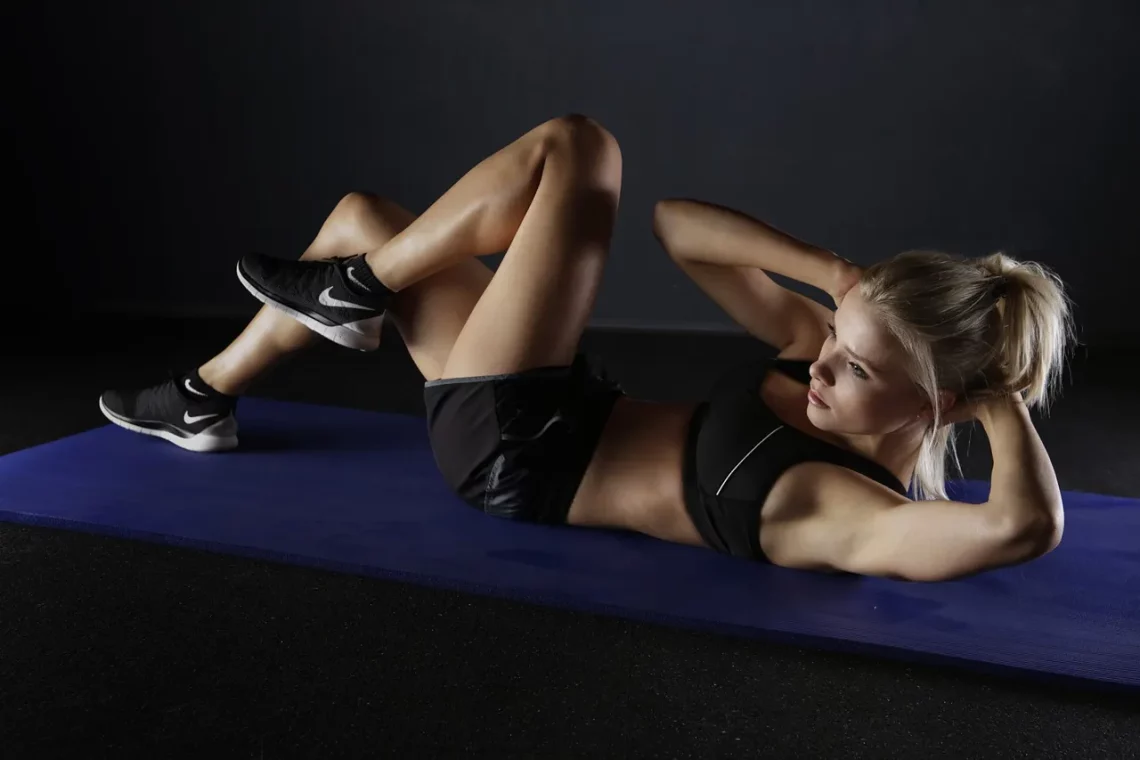
The Ultimate Guide to Hack Squat Machines for Effective Leg Workouts
The world of fitness is constantly evolving, with new equipment and techniques emerging to help individuals achieve their health and wellness goals. Among the plethora of machines available at gyms, the hack squat machine stands out as a powerful tool for building leg strength and enhancing overall lower body aesthetics. This specialized equipment targets the quadriceps, hamstrings, and glutes, making it a favorite among both casual gym-goers and serious athletes.
The hack squat machine allows for a safe and effective way to perform squats, minimizing the risk of injury while maximizing the benefits associated with traditional squat movements. Whether you’re a beginner looking to improve your form or an experienced lifter aiming to increase your strength, understanding how to effectively use the hack squat machine can be a game-changer. With its unique design, this machine provides stability and support, allowing users to focus on their leg workouts without the strain that free-weight squatting might impose.
As you delve deeper into the mechanics and advantages of the hack squat machine, you’ll discover how it can fit into your fitness routine, complementing other exercises and enhancing your leg day regimen. The importance of proper technique, the variety of workouts you can perform, and tips for maximizing your results are all essential aspects to consider when integrating this machine into your training program.
Understanding the Hack Squat Machine: Features and Benefits
The hack squat machine is designed with a specific purpose: to isolate and strengthen the lower body muscles while providing users with a safe and controlled environment. Its design typically includes a padded backrest, shoulder pads, and a platform for the feet, allowing for a stable squat movement without the need for heavy barbell equipment.
One of the primary benefits of using a hack squat machine is that it significantly reduces the risk of injury, particularly to the lower back. Unlike traditional squats that require careful attention to form, the hack squat machine supports the user’s back and maintains proper alignment throughout the exercise. This support allows individuals to focus solely on the leg muscles being targeted, making it an excellent option for those who may have previous injuries or limitations.
In addition to safety, the hack squat machine offers versatility. Users can adjust the weight according to their individual strength levels, allowing for progressive overload—a key factor in muscle growth and strength development. This adaptability makes it suitable for both beginners and experienced lifters, as one can easily modify the resistance to match their current fitness level.
Moreover, the hack squat machine emphasizes the quadriceps, which are essential for a variety of physical activities, from running to jumping. The machine’s design promotes a deeper squat than many individuals can achieve with free weights, enhancing muscle activation in the quads while also engaging the hamstrings and glutes. This muscle engagement is crucial for building strength and improving overall athletic performance.
In summary, the hack squat machine is a valuable asset for anyone looking to improve their leg strength and overall fitness. Its safety features, versatility, and focus on the primary leg muscles make it an excellent choice for enhancing your leg workouts.
How to Properly Use the Hack Squat Machine
Using the hack squat machine effectively requires understanding its design and following specific steps to ensure you’re performing the exercise correctly. First, it’s essential to adjust the machine to fit your body. Most hack squat machines come with adjustable shoulder pads and foot platforms. Make sure the pads rest comfortably on your shoulders, and your feet are positioned at a shoulder-width stance on the platform.
Once you’re properly positioned, stand up to lift the weight off the safety hooks, ensuring your back is pressed firmly against the padded backrest. Begin the exercise by bending your knees and lowering your body into a squat. Aim to go as low as your flexibility allows while keeping your back straight and your knees in line with your toes. This depth is crucial for maximizing muscle engagement and ensuring proper form.
As you lower your body, focus on maintaining control throughout the movement. Avoid letting your knees cave inward; instead, push through your heels to engage the glutes and hamstrings effectively. When you reach the bottom of the squat, pause briefly before pushing through your heels to return to the starting position. This explosive upward movement not only builds strength but also enhances muscle coordination and stability.
It’s important to start with lighter weights when learning how to use the hack squat machine. As you become more comfortable with the movement and your form improves, gradually increase the weight to continue challenging your muscles. Additionally, consider incorporating variations into your routine, such as adjusting your foot position or altering your tempo, to keep your workouts engaging and effective.
Lastly, always listen to your body. If you experience any pain or discomfort while using the machine, stop immediately and reassess your form or weight. Proper technique is crucial for preventing injuries and ensuring that you’re getting the most out of your workouts.
Incorporating Hack Squats into Your Leg Day Routine
Integrating hack squats into your leg day routine can significantly enhance your overall training results. To get the most out of this exercise, consider how it complements other lower body movements. A well-rounded leg day might include a mix of compound and isolation exercises, each targeting different muscle groups and movement patterns.
For instance, you might begin your leg workout with heavy compound lifts like barbell squats or deadlifts. These exercises engage multiple muscle groups and build overall strength. Following these foundational movements, you can transition to the hack squat machine to specifically target the quadriceps while taking advantage of the machine’s support and stability.
In addition to hack squats, consider including other accessory exercises that focus on the hamstrings and glutes. Lunges, leg curls, and glute bridges are excellent additions that can help create a balanced lower body workout. By alternating between different exercises, you can ensure that all muscle groups are engaged, which is vital for overall leg strength and aesthetics.
Furthermore, pay attention to your rest periods between sets. Shorter rest intervals can help increase the intensity of your workout, while longer rests may be beneficial if you’re lifting heavier weights. Experiment with different rest durations to see what works best for your goals and fitness level.
Lastly, don’t forget to prioritize recovery. Incorporating stretching and mobility work post-workout can help improve flexibility and reduce muscle soreness. Adequate hydration and nutrition also play a crucial role in recovery, ensuring your muscles are primed for future workouts.
By effectively incorporating hack squats into your leg day routine, you can achieve a balanced, comprehensive lower body workout that promotes strength, stability, and muscle growth.
Common Mistakes to Avoid When Using the Hack Squat Machine
While the hack squat machine is a valuable tool for enhancing leg workouts, several common mistakes can hinder your progress and potentially lead to injury. Understanding these pitfalls and how to avoid them is essential for maximizing your results.
One of the most frequent mistakes is improper foot placement on the platform. Many users tend to place their feet too high or too low, which can affect the biomechanics of the squat and lead to unnecessary strain on the knees or lower back. Ideally, your feet should be positioned shoulder-width apart, with your heels flat on the platform. This positioning allows for optimal muscle engagement and minimizes the risk of injury.
Another common error is neglecting to maintain proper posture throughout the movement. It’s crucial to keep your back pressed against the padded support and your chest lifted. Leaning too far forward can place excessive strain on the lower back, while rounding your back can lead to injuries. Focus on maintaining a neutral spine and engaging your core throughout the exercise to support your back.
In addition, some lifters make the mistake of using too much weight before mastering their form. It’s tempting to load up the plates to impress others or to achieve a personal record, but this can compromise your technique. Always prioritize form over weight, gradually increasing resistance only as your strength and comfort with the movement improve.
Lastly, failing to warm up properly can lead to injuries and limit your performance on the hack squat machine. A good warm-up should include dynamic stretches and mobility exercises that target the legs and hips, preparing your muscles for the workout ahead. Taking the time to warm up effectively can enhance your performance and reduce the risk of injury.
By being aware of these common mistakes and taking steps to avoid them, you can ensure that your experience with the hack squat machine is safe, effective, and rewarding.
In conclusion, the hack squat machine is a versatile piece of equipment that can significantly enhance your leg workouts. Its design promotes safety and effectiveness, making it suitable for individuals at all fitness levels. Remember to focus on proper technique, incorporate variety into your routine, and be mindful of common mistakes. As with any exercise program, it’s advisable to consult with a fitness professional if you’re unsure about your form or workout regimen.
This article is not intended as medical advice. If you have any health concerns or pre-existing conditions, please consult a healthcare professional before beginning any new exercise program.




